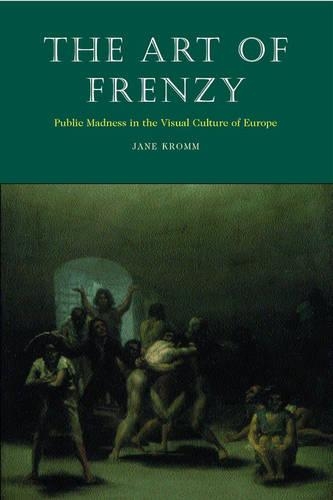
The Art of Frenzy: Public Madness in the Visual Culture of Europe, 1500-1850
(Hardback)
Publishing Details
The Art of Frenzy: Public Madness in the Visual Culture of Europe, 1500-1850
By (Author) Jane Kromm
Bloomsbury Publishing PLC
Continuum International Publishing Group Ltd.
1st January 2003
United Kingdom
Classifications
Tertiary Education
Non Fiction
The visual, decorative or fine arts: treatments and subjects
Abnormal psychology
616.890094
Physical Properties
Hardback
304
Width 156mm, Height 234mm
600g
Description
The Art of Frenzy presents a masterful analysis of public madness from the Renaissance to the Industrial Age. Frenzy--the most flagrant and political form of madness--is the madness of warrior-heroes, kings, scolds, and the possessed. Its representation incorporates a range of traditional characters and figures, from Hercules and Orlando to Medea and Britannia. Understood as abusive power and belligerence out of control, and described in terms drawn equally from definitions of tyranny and liberty, frenzy has always been articulated with a significant degree of political meaning. Integrating art history with cultural studies, political history, and the history of medicine, Jane Kromm draws on a wide range of mediums and contexts--from asylum sculpture to political broadsheets, medical texts, the imagery of revolution, caricature and medical illustrations--to clarify the importance of this interpretative pattern.
Reviews
"The Art of Frenzy skilfully traces the various traditions of conceptualizing and representing mania from the Greeks onwards. Kromm focuses on the Renaissance and the Enlightenment to explore the relationship between madness, art and politics. Wide-ranging, scholarly and integrating image and text with great skill, The Art of Frenzy presents a highly original and scholarly analysis of the cultural representation of madness in art and literature."--Professor Roy Porter, Welcome Trust Centre for the History of Medicine at University College
"Jane Kromm's The Art of Frenzy is a brilliant and original investigation of the public face of madness in Europe from 1500 to circa 1850. From heroic mania to riot and revolution, from the action of heroes to the hysteria of women, Jane Kromm creates an invigorating sense of the spectacle of madness and the inventive visual signs used to display it."--Linda Nochlin, Lila Acheson Wallace Professor of Modern Art, New York University Institute of Fine Art
".....a very welcome and thoughtful introduction to an area of medical knowledge that was livelier and more topical than is now generally appreciated." -- Medical History
Author Bio
Jane Kromm is Associate Professor of Art History at Purchase College, State University of New York. She is the author of numerous articles on the representation of madness.
